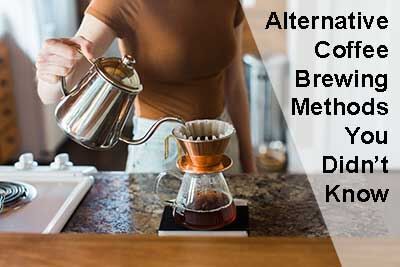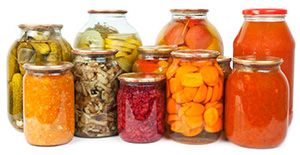In common belief, the most important for the taste of coffee are the properties of the blend – the content of Arabica and Robusta, sposób smoking or country of origin. However, the róan important factor is the wayób preparation of the drink. What methods will get you the perfect „small black”?
Although the first mention of the use of beneficial fruitóin coffee date back to the first century p.n.e., SourceóThe origin of the tradition of drinking the stimulating drink is traced by historians to 15th-century Yemen. It is the people of this Arab country who are credited with the custom of preparing coffee „Turkish”. According to this method, brewed in a copper or metal pot, the finely ground mixture with added sugar is poured over cold water. The vessel is then placed on a small fire – and heated so as not to boil the brew. This method, spreading to other countries, is still one of the most popular, traditional ways ofów for the preparation of aromatic coffee. Over the years and technological developments, the art of brewing „little black” has, however, undergone significant changes. In the early 18th century, a French device in the form of a jug with a lid was recognized. One hundred years of póA brewer equipped with a whisking sieve became famous later on. The first espresso machine, however, was invented in Italy, whichóre to this day called „The homeland of espresso”. Luigi Bezzer's design, based on the action of steam, is today considered the prototype of theór wspómodern espresso machinesóIn pressurized.
Coffee in the manner ofób italian
Behind the preparation of the brew on the sposób Italian, that is, in pressurized flask coffee makers, appeals above all to the possibility of extracting the full flavor and aroma from coffee beans. – This is done by passing hot water under pressure through a ground coffee blend placed in a flask – explains Joanna Sobyra, Segafredo Zanetti Poland expert. – ZaróBoth in the case of catering equipment and those for home use, the taste bouquet of the espresso is determined by the right parameters – pressure at 19 bar, water temperature of 85-95⁰ and extraction lasting about 25 seconds – adds the expert. Oprócz that meets these requirements of the espresso machine, it is also important to properly prepare the mixture. According to Italian custom, the beans are ground just before brewing „small black”. There should be 7-8 grams per espressoóin coffee and what is extremely important – It should be characterized by a perfect and balanced composition of 6 to 9 blendów. This is because the brew is the essence of the rich flavor and aroma of the coffee beans. Thanks to the relatively krótek extraction, any harmful substances remain in the flask, without penetrating into the beverage. A perfect espresso will be a perfect base for other coffee offerings, blending with additions such as milk, ice cream, aromatic spices or alcohol.
Alternative „brewers” coffee
Cafes are beginning to appear in Poland, in which theóThe emphasis in these countries is on alternative ways of brewing coffee, without giving up róof the traditional espresso machine with a flask. Fromód of the most popular alternative devices we find drippers, siphons and areopresses. What does wyróThe use of this type of equipment? The first of these, shaped like a closed from góry cup, works on the basis of the overflow method. After placing the mixture on a paper filter and pouring boiling water over it, the brew is seeped into a cup placed under the dripper. Coffee brewing with a siphon, characterized by a slightly more complicated design, is carried out through the action of high pressure. Approximately pół liter of water and 30 grams of ground beans. For the last of the alternative proposals – aeropress, the coffee is brewed in a cylinder and then, with the help of a piston, seeped into the cup.
For the preparation of infusionsóalternative methods usually use light roasted blends that contain only one blend, or type of bean. – This type of solution is a good cognitive method. By preparing an infusion from a single type of bean, we will learn exactly what their bouquet of flavor is and how much they influence the taste of the coffee – explains Joanna Sobyra, expert of Segafredo Zanetti Poland. – However, coffee prepared on the basis of one type of bean may be characterized by a sour or bitter taste. Such a blend will therefore not work well for espresso, whichóre due to its essence and flavor character requires the use of blends consisting of multiple blendsóFor the preparation of infusions, which is the typeóin the beans – expert adds. What róImportantly, when using alternative equipment, we have to choose the right amount of the mixture and the way ofób its grinding, the amount and optimum temperature of water and accurately assess the duration of extraction. For the untrained person, the process of brewing coffee in this wayób can therefore prove time-consuming, and the result may be unsatisfactory.
The golden mean
Which solution will be the best? Cultivating the Italian coffee brewing tradition or following new trends? When making a decision, it is worth keeping in mind first of all the customer's preferencesów. Accustomed to their favorite coffee, they may disapprove of próto alter its flavor. So a good solution will be to treat alternative equipmentów as a complement to barista equipment. The traditional Italian method is a guarantee of excellent taste and espresso quality. A siphon or aeropress, on the other hand, can serve as an occasional curiosity, confirming the extensive knowledge of the serving barista.



